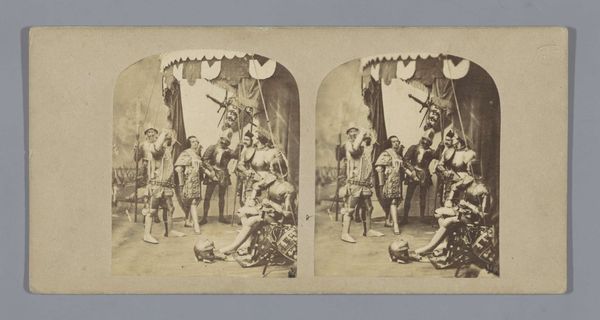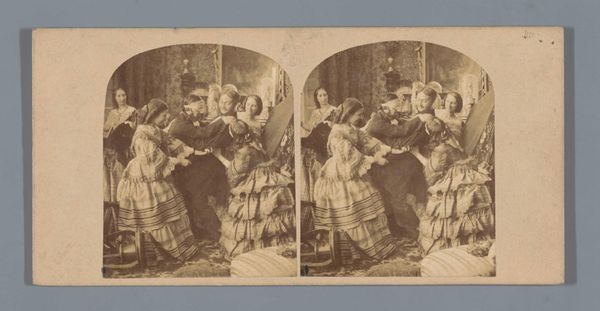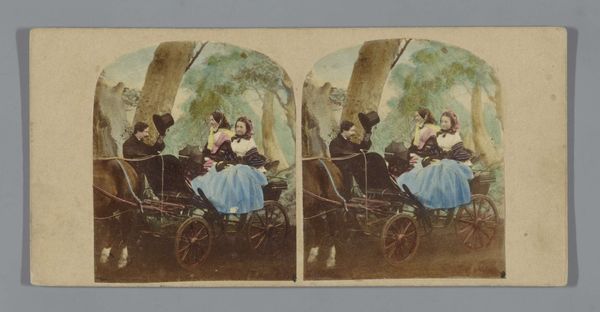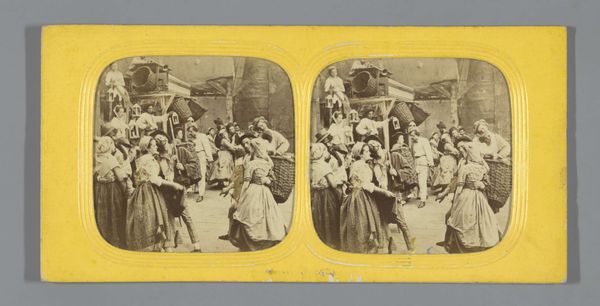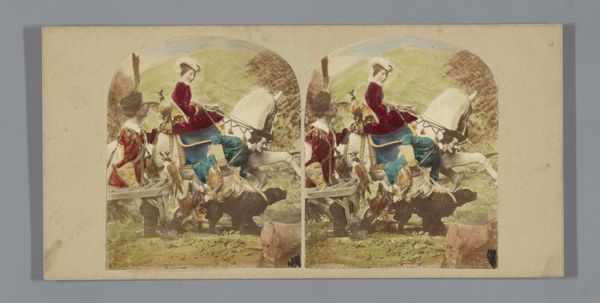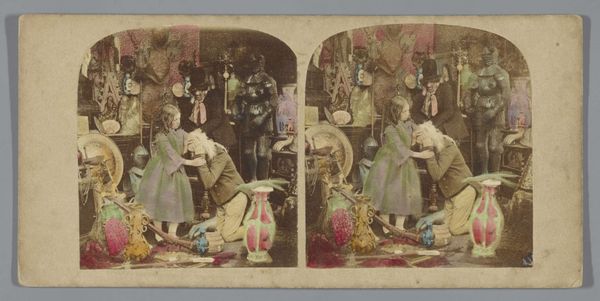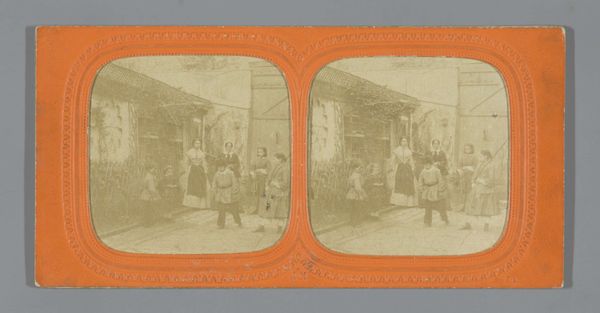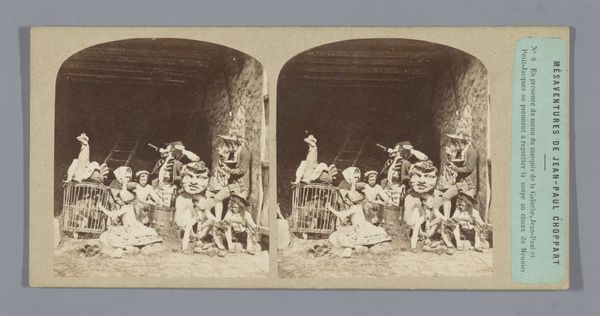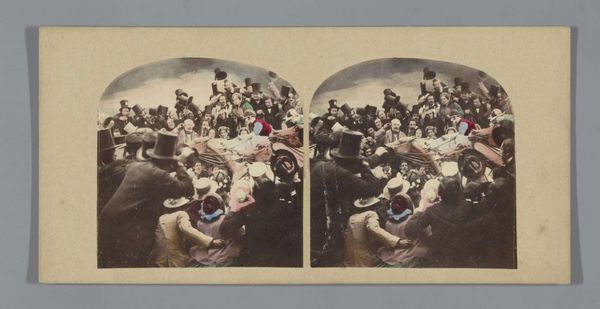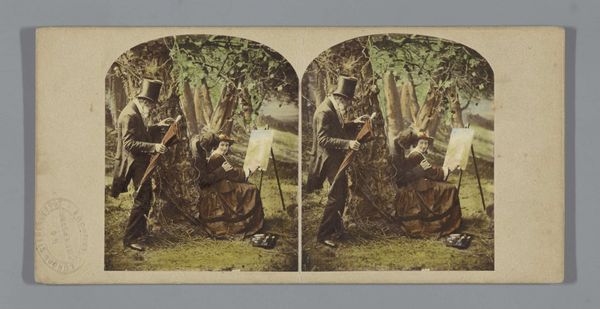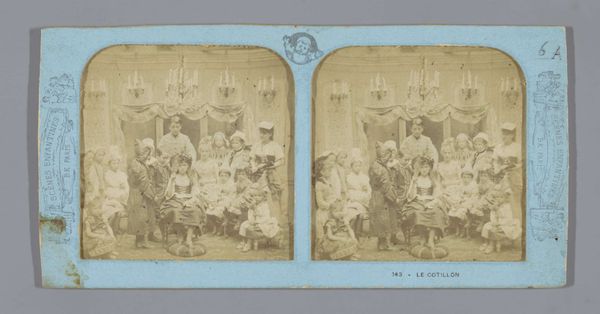
Dimensions: height 86 mm, width 176 mm
Copyright: Rijks Museum: Open Domain
Curator: Looking at this image, my first impression is one of muted chaos. There's a clear arrangement of figures, yet their interactions are unclear, leaving me somewhat disquieted. Editor: You’re right, it does hold a peculiar tension. What we’re looking at is a print titled “Groep mensen op een strand,” which translates to “Group of people on a beach." It's attributed to an anonymous creator and believed to have been made between 1852 and 1863, utilizing a combination of photographic and coloring techniques. Examining its social context might offer some clues. Curator: Absolutely. I'm immediately drawn to the presentation of leisure, and how constructed it all feels. Are these figures presented as types rather than individuals? I wonder about the performative aspects of displaying wealth and social standing in mid-19th century society. And consider the little girl in the lower left corner—set apart, perhaps even excluded. What does this imagery say about class divisions at that time? Editor: That’s a great point. Beach scenes became increasingly popular subjects around this time as coastal towns transformed into tourist destinations. Examining period etiquette guides may clarify these codes of conduct in public spaces. And let's also not forget how photography itself played a role in constructing and disseminating these idealized images. Think about the technical limitations and the labor involved in creating these hand-colored prints. They're definitely staged, curated versions of reality. Curator: Precisely, the labour piece is key: Whose beach leisure are we viewing, and at whose expense? We should ask ourselves how anxieties surrounding industrialization or rapid social changes manifest here. Do the individuals within the photo embody resistance or complicity to this quickly changing society? Editor: Right. We must contextualize it by thinking about how these prints functioned within visual culture. Were they meant to be consumed individually, as mementos? Or did they serve a larger purpose in shaping societal values and norms through the very staging you mentioned? By considering factors beyond the purely aesthetic qualities, like consumption patterns, for instance, and contemporary ideologies, we’re closer to unraveling this picture’s complexities. Curator: It’s funny; Initially, the seemingly banal “day at the beach” almost concealed such intricacies. Now, I see how packed this composition really is—a photograph thick with contradictions around both visibility and historical social mores. Editor: Yes, it's amazing how such an everyday snapshot encapsulates such deep and wide commentary regarding gender, economics and social tensions.
Comments
No comments
Be the first to comment and join the conversation on the ultimate creative platform.


